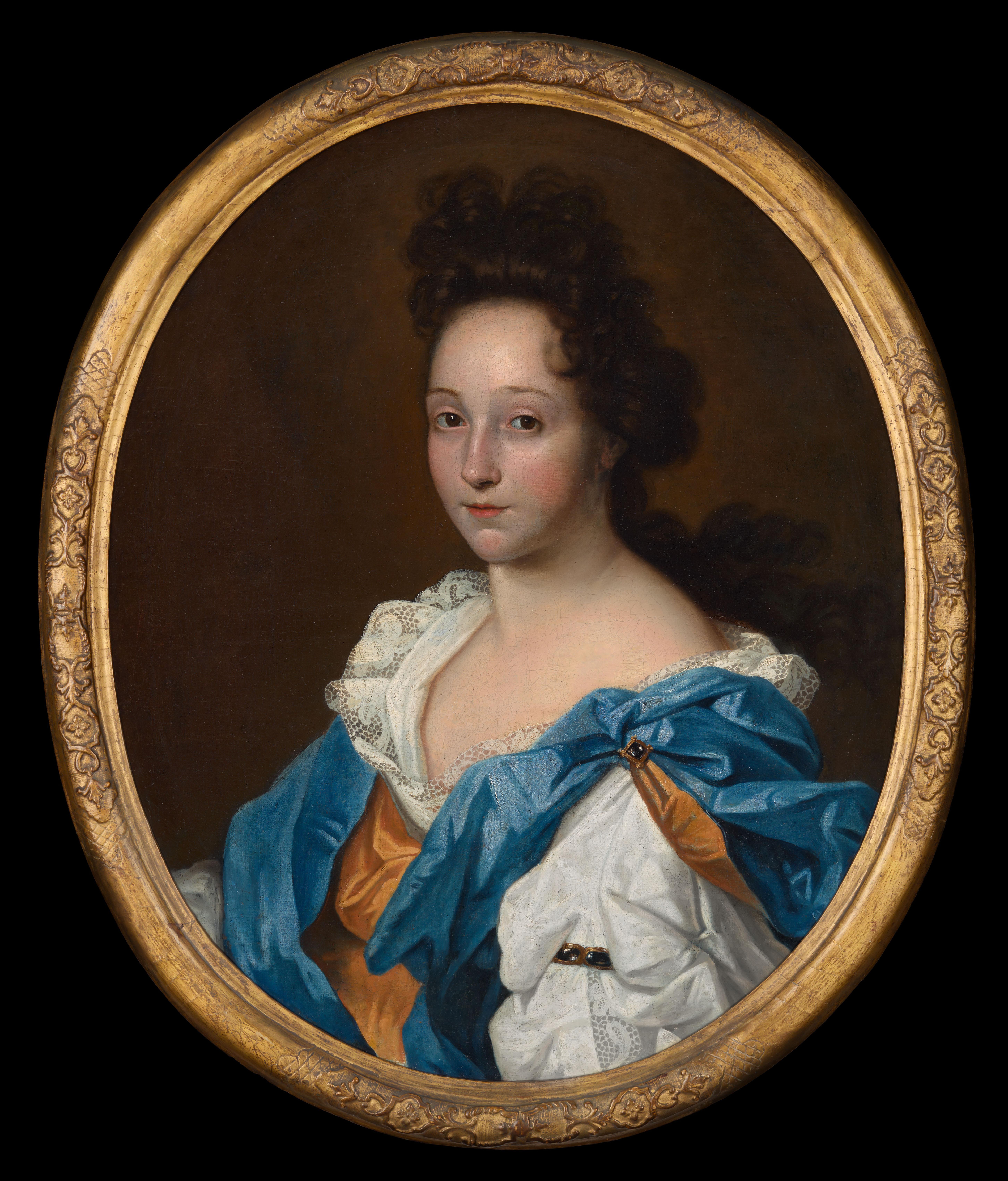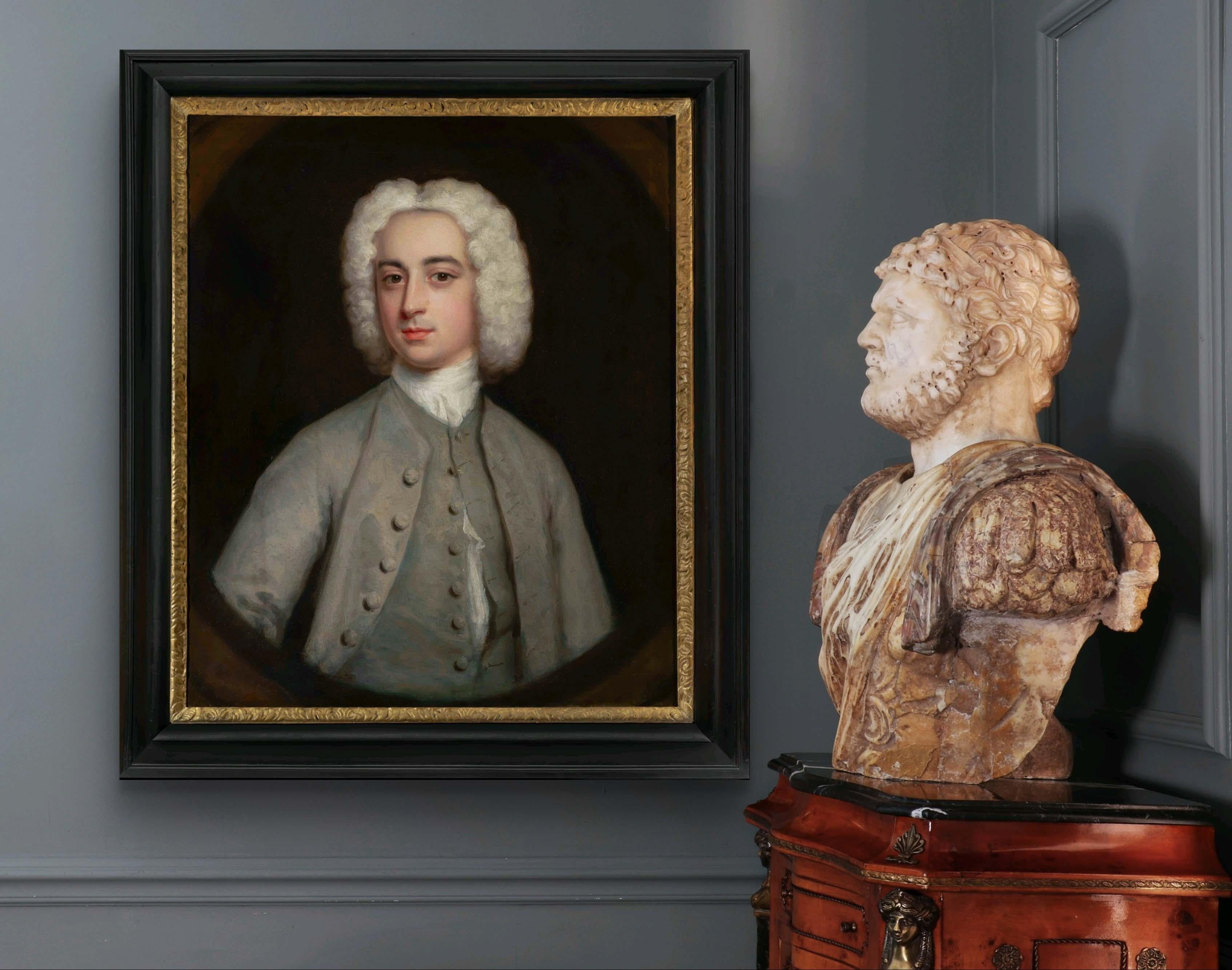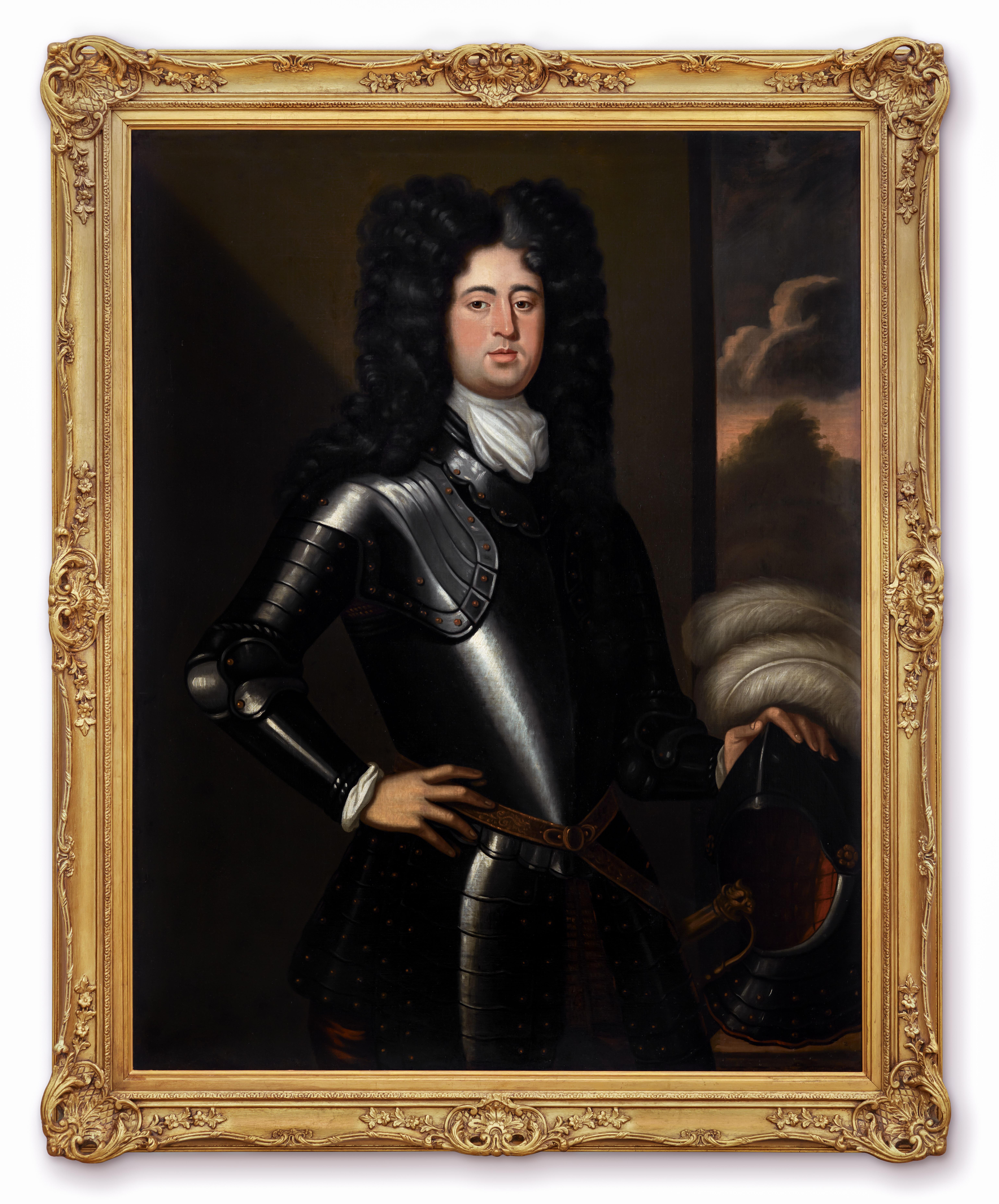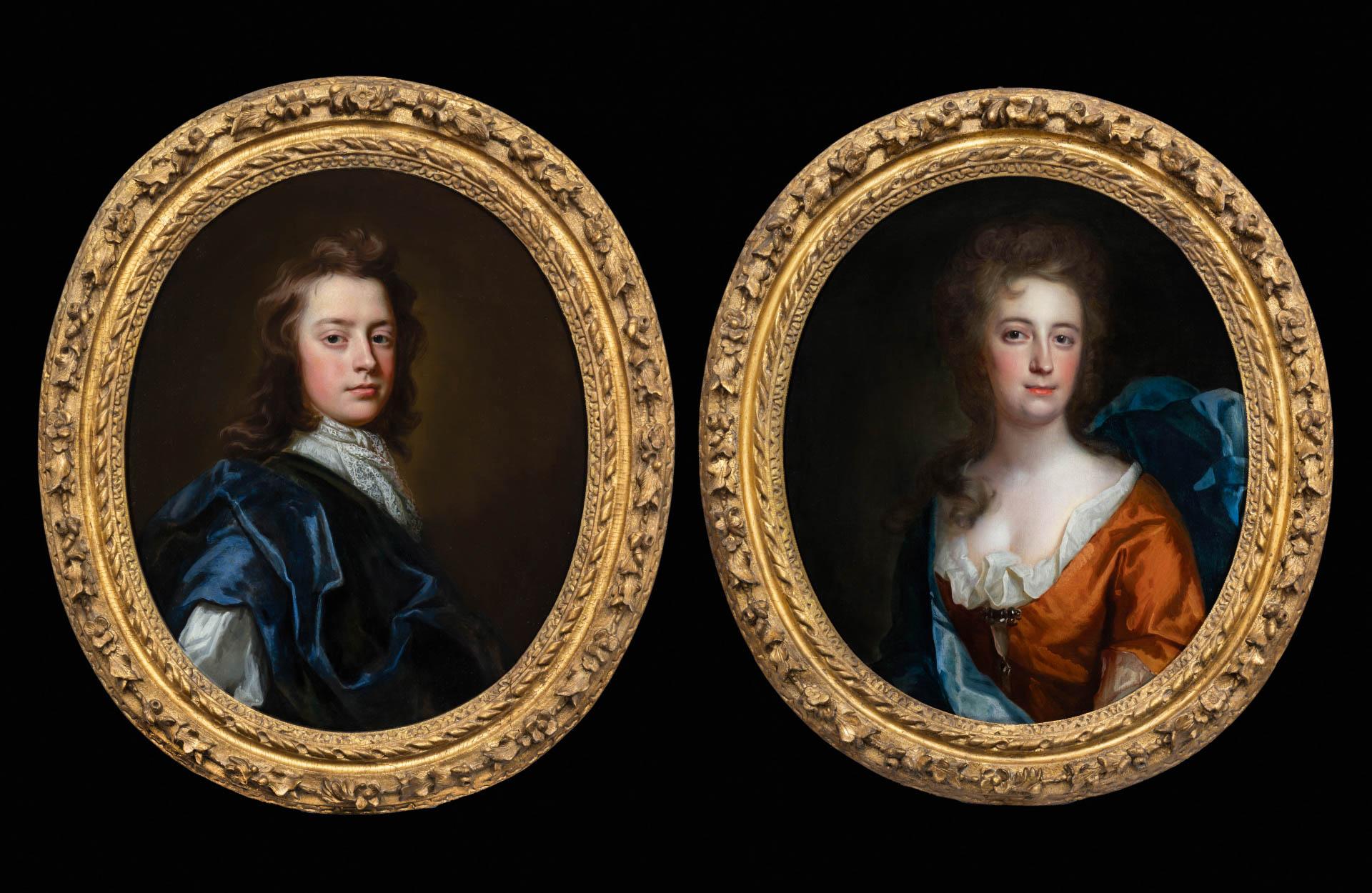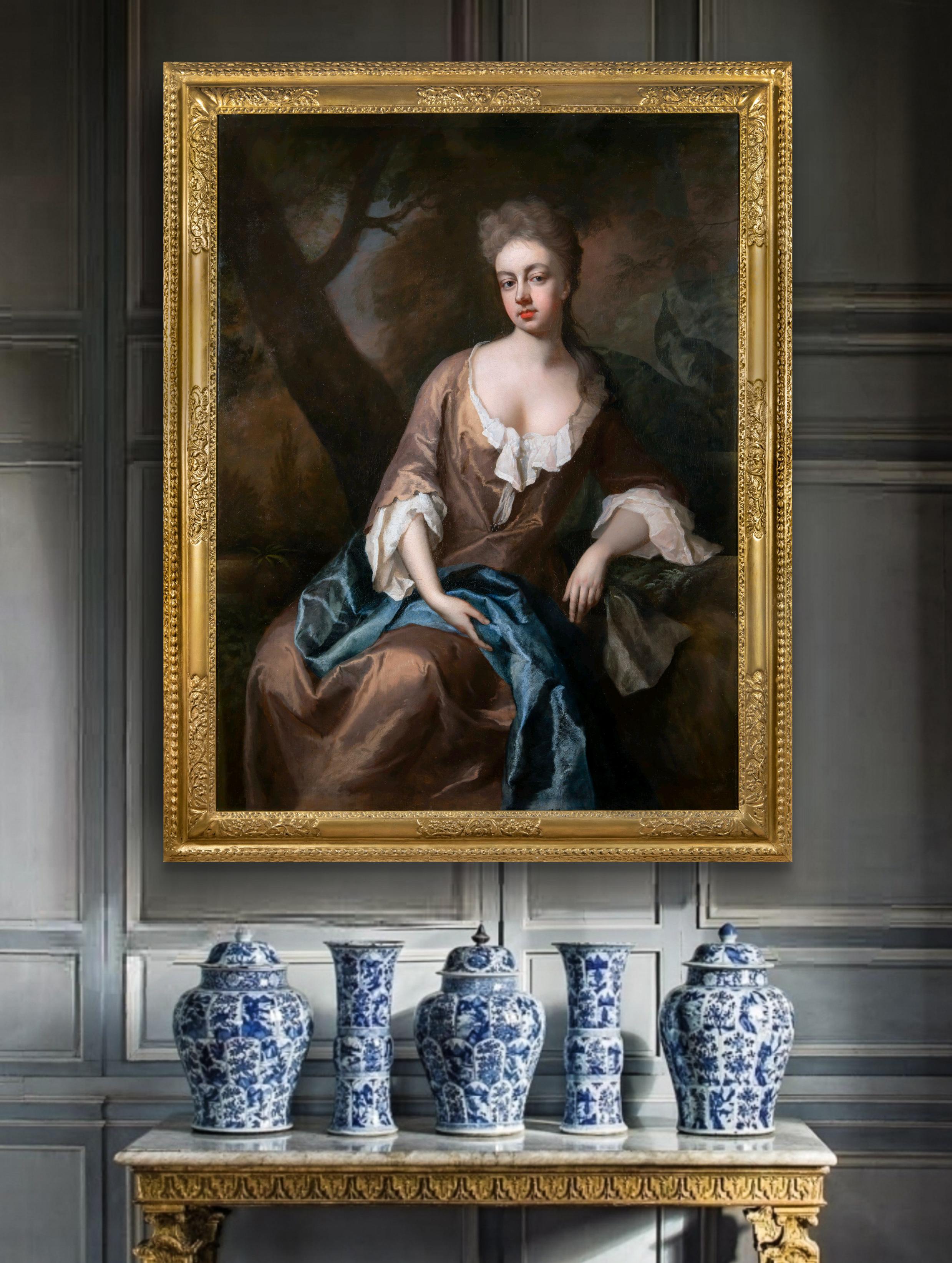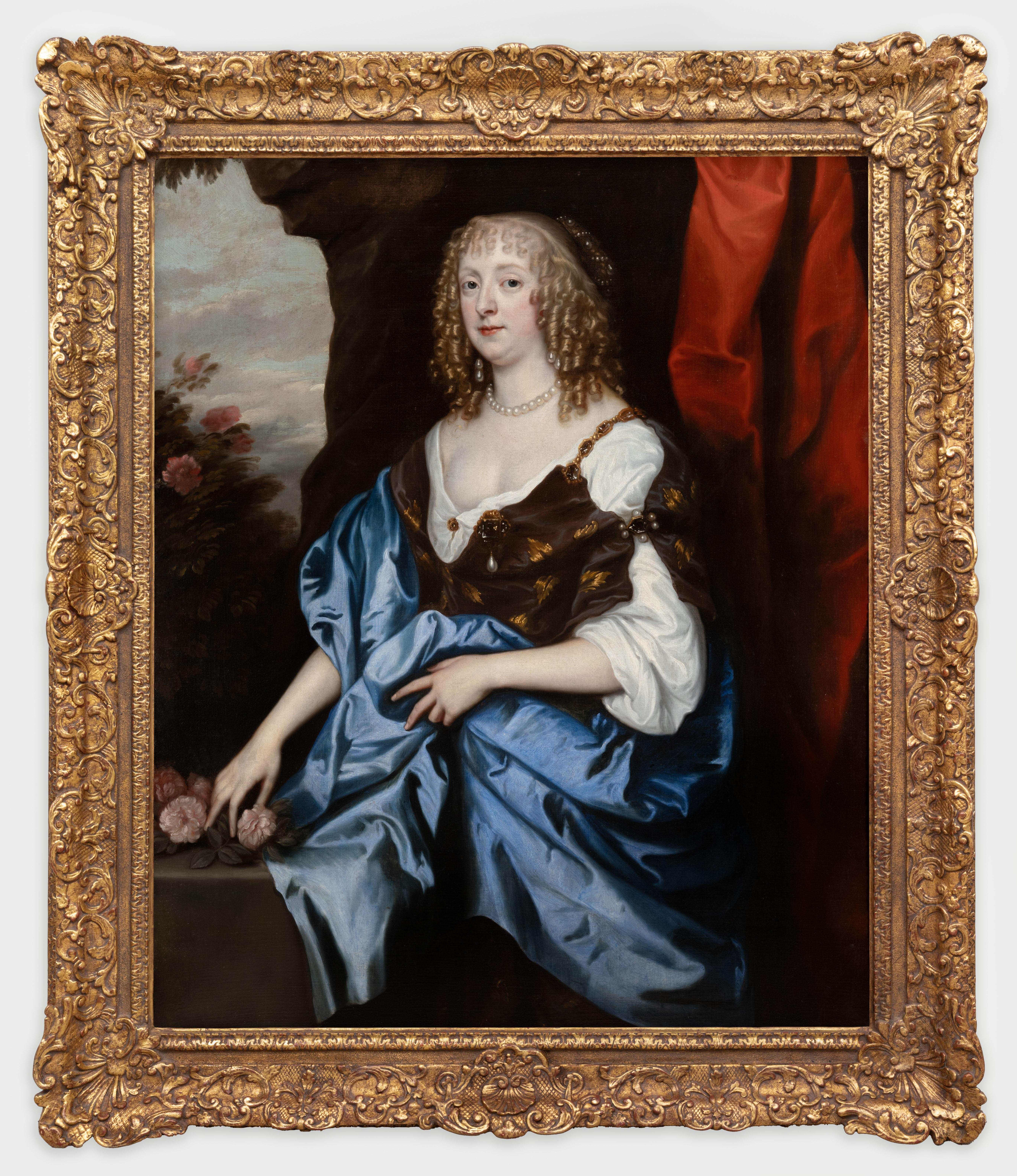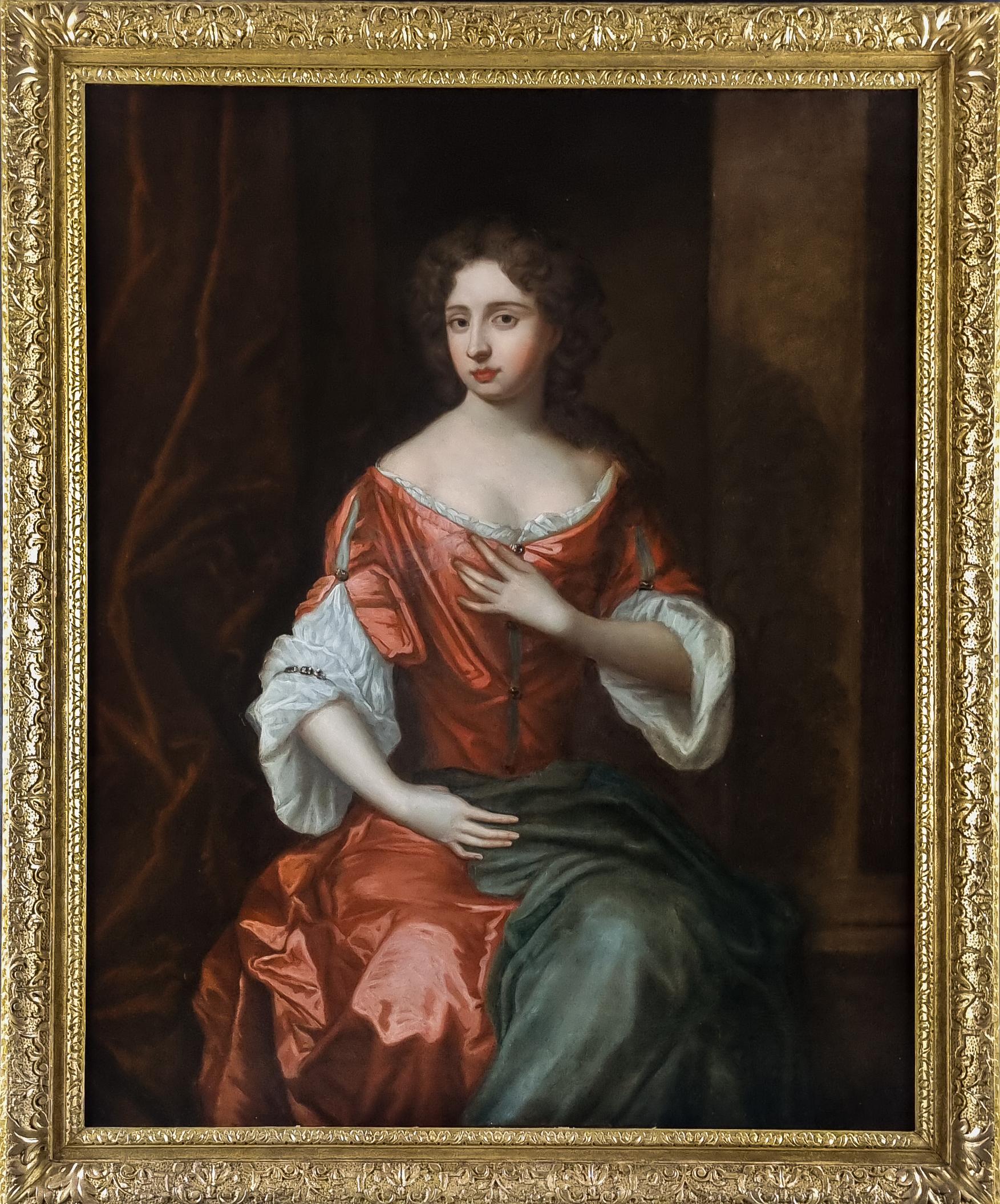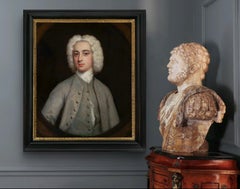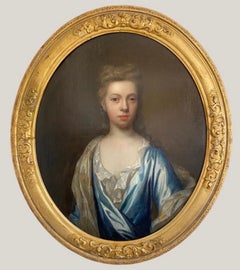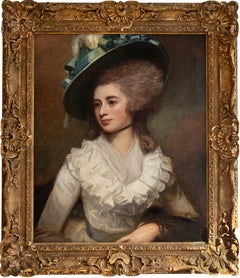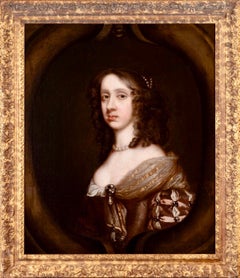
Portrait of Young Gentleman, Lord George Douglas, Arcadian Landscape c.1710
View Similar Items
Want more images or videos?
Request additional images or videos from the seller
1 of 11
Attributed to Charles D'AgarPortrait of Young Gentleman, Lord George Douglas, Arcadian Landscape c.1710circa 1710
circa 1710
$9,586.86List Price
About the Item
- Creator:Attributed to Charles D'Agar (1669 - 1723, French)
- Creation Year:circa 1710
- Dimensions:Height: 58.27 in (148 cm)Width: 48.82 in (124 cm)Depth: 3.15 in (8 cm)
- Medium:
- Movement & Style:
- Period:
- Condition:Very good quality and condition. This painting has passed a strict quality and condition check by a professional conservator prior to going on sale. It can be hung and enjoyed immediately.
- Gallery Location:London, GB
- Reference Number:1stDibs: LU119919323062
About the Seller
5.0
Gold Seller
Premium sellers maintaining a 4.3+ rating and 24-hour response times
Established in 1998
1stDibs seller since 2019
44 sales on 1stDibs
Typical response time: 3 hours
Authenticity Guarantee
In the unlikely event there’s an issue with an item’s authenticity, contact us within 1 year for a full refund. DetailsMoney-Back Guarantee
If your item is not as described, is damaged in transit, or does not arrive, contact us within 7 days for a full refund. Details24-Hour Cancellation
You have a 24-hour grace period in which to reconsider your purchase, with no questions asked.Vetted Professional Sellers
Our world-class sellers must adhere to strict standards for service and quality, maintaining the integrity of our listings.Price-Match Guarantee
If you find that a seller listed the same item for a lower price elsewhere, we’ll match it.Trusted Global Delivery
Our best-in-class carrier network provides specialized shipping options worldwide, including custom delivery.More From This Seller
View AllPortrait of a Gentleman in Scarlet Robe Holding Flowers c.1675, Oil on canvas
Located in London, GB
Titan Fine Art present this striking portrait, which was painted by one of the most talented artists working in England during the last half of the 17th century, John Greenhill. Gre...
Category
17th Century Old Masters Portrait Paintings
Materials
Canvas, Oil
Portrait of a Lady in Green Dress & Pearl Jewellery c.1660 Painting John Wright
By John Michael Wright
Located in London, GB
In this exquisite work, painted around the time of the Great Fire of London in 1666, a beautiful young woman is wearing a green dress over a white chemise and a russet-coloured scarf...
Category
17th Century Old Masters Portrait Paintings
Materials
Canvas, Oil
Portrait of a Lady in White Chemise, Russet & Blue Drapery c.1695, Oil Painting
By Harman Verelst
Located in London, GB
This lavish portrait, painted circa 1695, is an exquisite example of the type of portrait in vogue during the last quarter of the seventeenth century. It is evident that the artist ...
Category
17th Century Old Masters Portrait Paintings
Materials
Canvas, Oil
Portrait of a Gentleman in Grey Coat & White Cravat, Oil on canvas Painting
Located in London, GB
This exquisite work, presented by Titan Fine Art, is by the notable artist Hans Hysing, who was a noteworthy painter in England; it is significant in its q...
Category
18th Century Old Masters Portrait Paintings
Materials
Canvas, Oil
Portrait of William of Orange, later William III, in Armour, Peter Lely Painting
By Sir Peter Lely
Located in London, GB
This exquisite portrait, presented by Titan Fine Art, depicts King William III, when he was Prince of Orange. The military-minded William III is portrayed as the archetypal commande...
Category
17th Century Old Masters Portrait Paintings
Materials
Canvas, Oil
Portrait of Gentleman in Armour by Table & Helmut c.1685 Aristocratic Provenance
By Johann Kerseboom
Located in London, GB
Portrait of a Gentleman in Armour beside a Table with Helmut c.1685
Follower or circle of Johann Kerseboom (d.1708)
This exquisite Grand Manner work, presented by Titan Fine Art, wa...
Category
17th Century Old Masters Portrait Paintings
Materials
Canvas, Oil
You May Also Like
18th century painting of the Dalbiac family in the gardens of a country house
By Charles Philips
Located in Bath, Somerset
The painting depicts James (Jacques) Dalbiac, his wife Louise (ne de la Porte) and their five children, James, Charles, Louise, Marianne and Martha in the ornamental gardens of a grand country estate.
The extensive gardens extend into the distance with gardeners working in the background and figures strolling through the avenues of trees. A peacock and peahen can be seen on the wall to the left and a potted orange tree to the right. Louise Dalbiac holds an orange taken from the orange tree, aluding to the family's faith and their loyalty to the protestant King William of Orange and their adopted country.
The Dalbiacs were wealthy London silk and velvet merchants of French Huguenot origin who had fled France at the end of the 17th century to escape persecution for their protestant faith. England offered safe refuge and their skills and industriousness allowed them to establish one of the most successful businesses in London's Spitalfields which became a new centre of the silk trade, effectively leading to the collapse of the once dominant French silk industry. Both sons, James and Charles followed their father and Uncle into the family business, successfully growing the family's fortune and each going on to own their own country estates.
A conversation piece is a genre of painting used to describe group portraits of families and friends, often depicted with their servants and family pets and set within an elegantly furnished interior or the garden of a grand country house. They were a celebration of the intimacy of family relations as well as a sign of status, property and the power of succession. The informality of conversation pieces grew popular in 18th century England, allowing the sitters to present themselves in a more relaxed pose, perhaps engaged in intellectual conversation or showing their talents or interests. In this present portrait, the Dalbiacs are shown richly dressed and and at leisure in a grand country house setting, conveying their success and cultural and social aspirations.
Charles Philips (c.1703–1747) was an English artist known for painting a number of portraits and conversation pieces for noble and Royal patrons in the mid-eighteenth century. He was the son of portrait painter Richard Philips...
Category
Early 18th Century Old Masters Portrait Paintings
Materials
Canvas, Oil
English 18th century portrait of a lady, Circle of Thomas Murray (1663-1735)
Located in Bath, Somerset
An early 18th century portrait of a young lady, half length, wearing a blue silk gown with white chemise and gold trimmed cloak draped across her arm and shoulders. Her sensitively observed soft expression and skilfully painted youthful 'dewy' complexion are reminiscent of the portrait style of John Closterman whose work Murray would have been familiar with, being a close colleague of Murray's teacher, John Riley.
An old label on the reverse identifies the sitter as a young Princess Charlotte...
Category
Early 18th Century Old Masters Portrait Paintings
Materials
Canvas, Oil
$8,397 Sale Price
20% Off
Portrait of Lady Caroline Price
By George Romney
Located in Miami, FL
DESCRIPTION: Perhaps the best Romney in private hands. If Vogue Magazine existed in the late 18th century, this image of Lady Caroline Price would be ...
Category
1970s Old Masters Portrait Paintings
Materials
Oil, Canvas
17th century English portrait of a lady
By Willem Wissing
Located in Bath, Somerset
Portrait of a lady attributed to William Wissing, half-length, wearing a pearl necklace and an amber gown adorned with jewels to the bodice and sleeves, wit...
Category
17th Century Old Masters Portrait Paintings
Materials
Canvas, Oil
A portrait of a lady and her daughter with an exotic bird
By Michael Dahl
Located in Bath, Somerset
A portrait of a lady three-quarter length, seated in an interior, wearing a red silk gown draped in a pink silk sash with an exotic bird perched on her hand and one arm resting on a stone plinth, her young daughter wearing a green silk gown standing at her side.
Oil on canvas, housed in a period 'Lely' giltwood frame.
This double portrait was painted at the height of Dahl's career in circa 1715 when Dahl had become firmly established as one of the leading portrait painters in Britain. Although the identities of the sitters are currently unknown, it is a sensitive depiction of a close and affectionate bond between a mother and daughter, with the young girl's hand resting affectionately on her mothers lap. The tamed exotic bird adds a charming decorative element which also serves to convey the high social status of the lady, given only the very wealthy would be able to own such a rare and expensive pet and the lively colouring of the bird's feathers is reflected in the colours of the sitters' silk gowns.
Provenance: Private collection, London
Michael Dahl (Stockholm 1659-1743 London) was born in Stockholm in Sweden and studied under Martin Hannibal (d 1741) and later with David Klöcker Ehrenstrahl. In 1682 he travelled to London, where he became acquainted with Godfrey Kneller and Henry Tilson, and in 1685 he left for Europe with Tilson, working briefly in Paris before continuing to Venice and Rome, where they stayed for about two years. In Rome Dahl converted to Roman Catholicism and gravitated towards the circle of Christina, former Queen of Sweden, who sat for him (Grimsthorpe Castle, Lincs). He returned to England with Tilson via Frankfurt and arrived in London in 1689, staying in England for the remainder of his career.
During Dahl's absence, Kneller had consolidated his supremacy in London as the most fashionable portrait painter, but Dahl rapidly became Kneller’s closest competitor. His patrons probably had roots in the Swedish diplomatic circles, but it expanded as a result of his ability and his agreeable personality. His prices were lower than those of Kneller and he favoured softer, more diffused, colour tones and could respond to his sitters with sincerity and humanity. Politically, Kneller supported the ascendant Whigs while Dahl was a Tory, but they frequently painted the same sitters from both parties, and in spite of fundamental differences in technique and temperament, their work was sometimes similar in appearance.
Dahl was prolific but rarely signed his work, and comparatively few of his portraits were engraved in mezzotint, the method used by Kneller to widen his reputation. By 1690 he had painted the aged Duke of Schomberg (engraved by William Faithorne) and Prince George of Denmark (London, Kensington Palace). He was ignored by William III but received commissions from Princess Anne, including one for a portrait of herself (Oakly Park, Ludlow, Salop). He also painted the future Duke and Duchess of Marlborough, and his informal portrait of the Duchess (Althorp House, Northants), formerly attributed to Kneller, is perhaps the most intimate of all images of her.
During the 1690s he secured the patronage of Charles Seymour, the ‘Proud’ 6th Duke of Somerset, who ordered a series of seven full-length portraits of notable contemporary beauties from Dahl (1690s; Petworth House, W. Sussex, NT). This was originally a scheme similar to Kneller’s more famous ‘Hampton Court Beauties’, but the portraits were subsequently reduced to three-quarter-length formats. The features of the sitters are not individualized, but they possess a decorative, languorous glamour that recalls Lely rather than Kneller. Somerset gave Dahl further employment over the next 25 years.
In 1698, following the death of Klöcker Ehrenstrahl, Dahl was offered the post of court painter at Stockholm, which he apparently refused, preferring to remain in London at his studio in Leicester Fields, near the Swedish legation. In about 1700 he was joined by a young compatriot, Hans Hysing, who worked with him for many years. Dahl seems not to have married until after 1708, He had a son Michael (d. 1741), also a painter, of whose work nothing is known, and two daughters.
After the accession of Queen Anne in 1701, she and Prince George sat for a number of official portraits. His royal patronage ceased with Queen Anne’s death, and when Dahl refused to paint the infant Duke of Cumberland in 1722. He was suspected of Jacobite sympathies, and relations had cooled between him and the Swedish legation. However, his practice continued to prosper, and he acquired another important patron in Edward Harley, 2nd Earl of Oxford, who shared his political views and whose circle included the architect James Gibbs and the poets Matthew Prior and Alexander Pope, all of whom Dahl painted. Oxford commissioned several portraits of himself. In the earliest (1719; Welbeck Abbey...
Category
Early 18th Century Old Masters Portrait Paintings
Materials
Canvas, Oil
$26,871 Sale Price
20% Off
Young Girl after Sir Thomas Lawrence, Regency portrait painting
Located in Brecon, Powys
Charming work in the Regency style, mid 19th Century after Sir Thomas Lawrence. High quality painting. Old Christie's Stencil to verso. Would grace any home, suitable for contempor...
Category
Mid-19th Century Old Masters Portrait Paintings
Materials
Canvas, Oil


